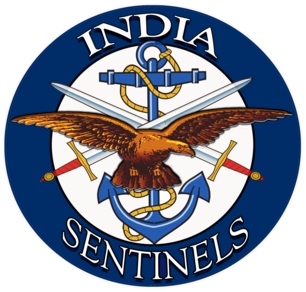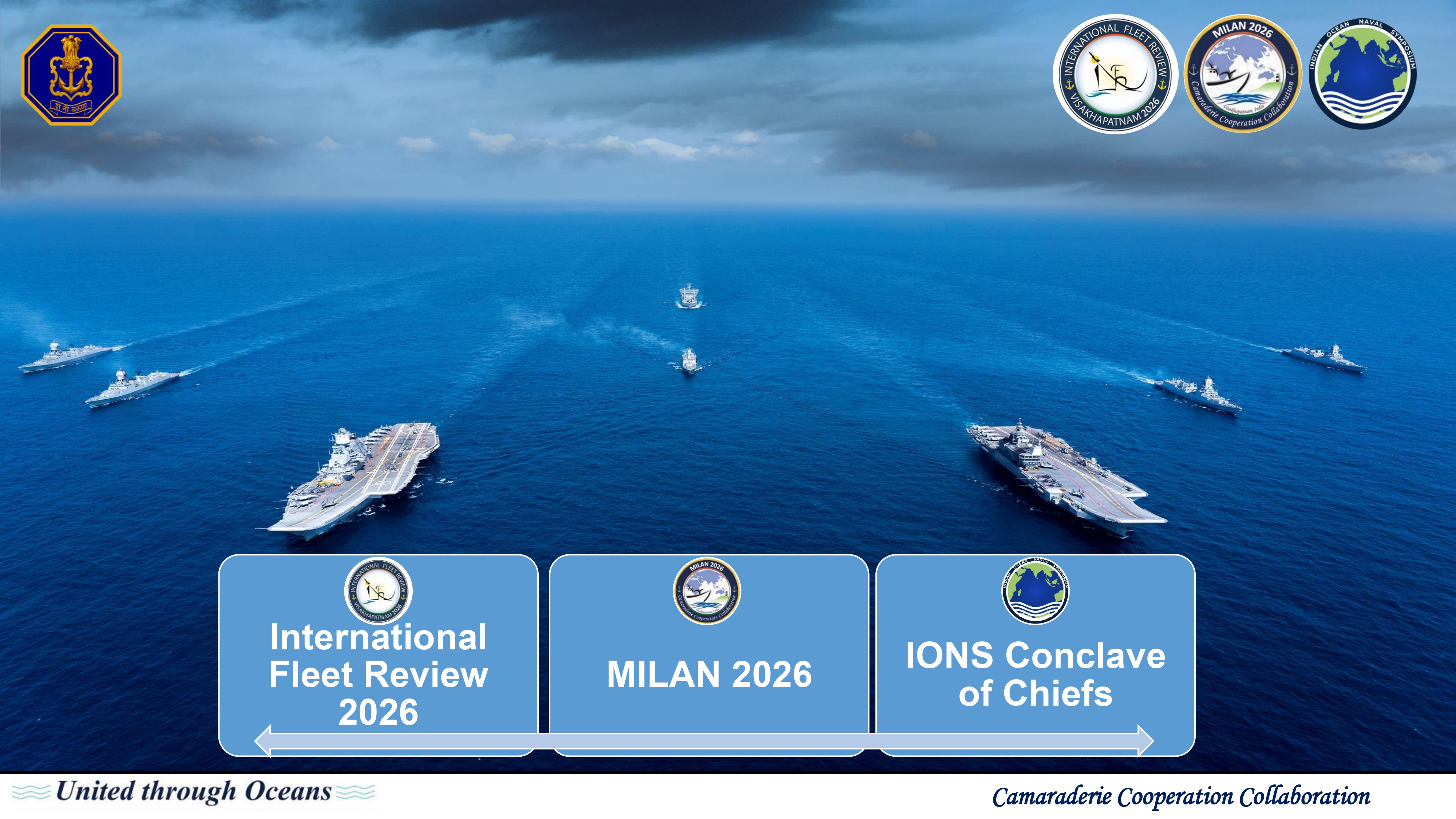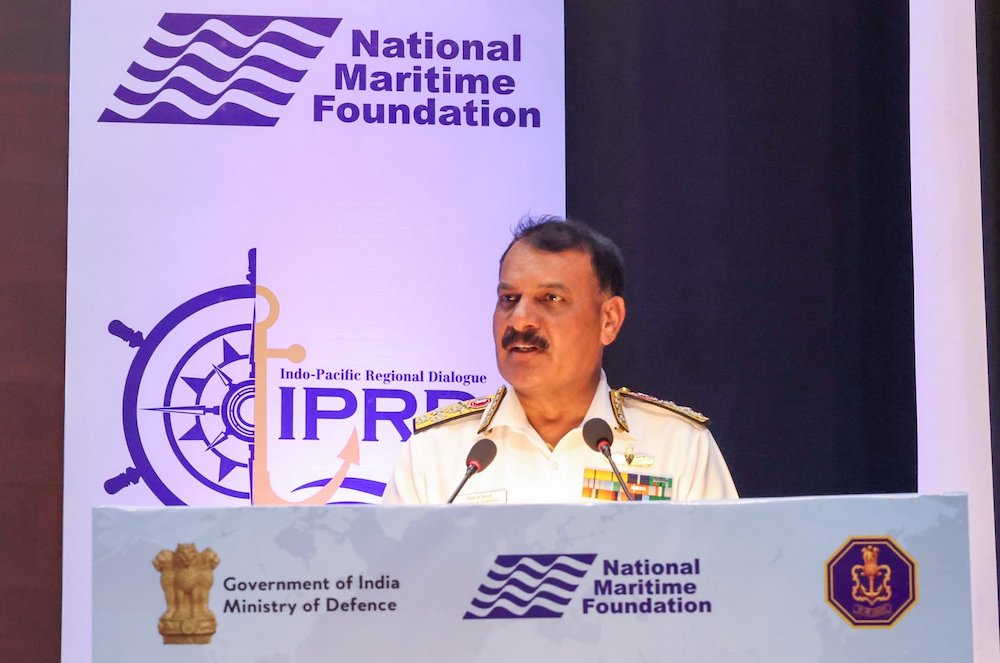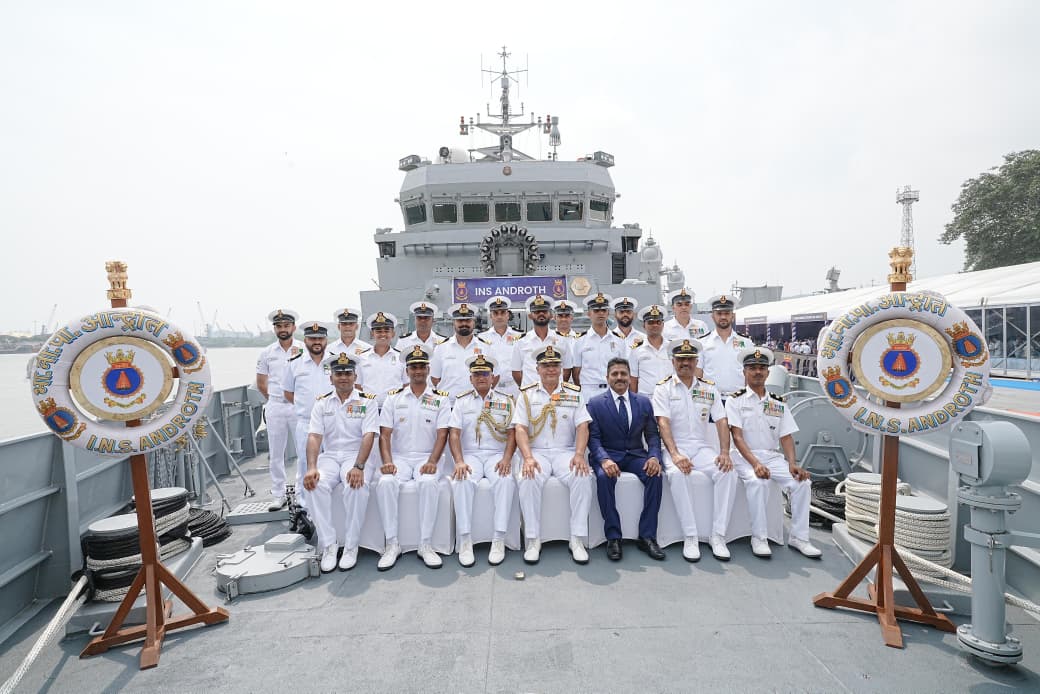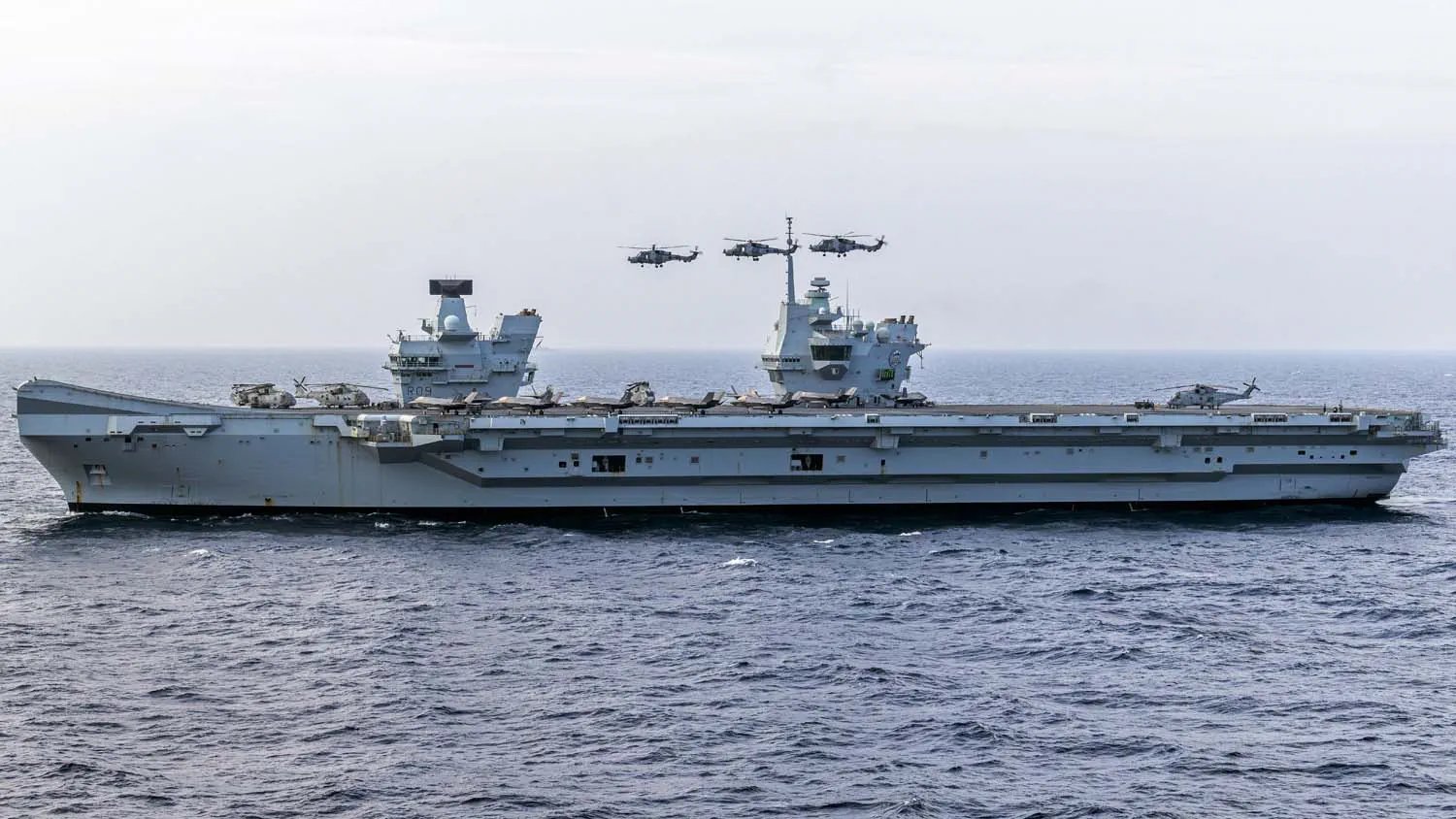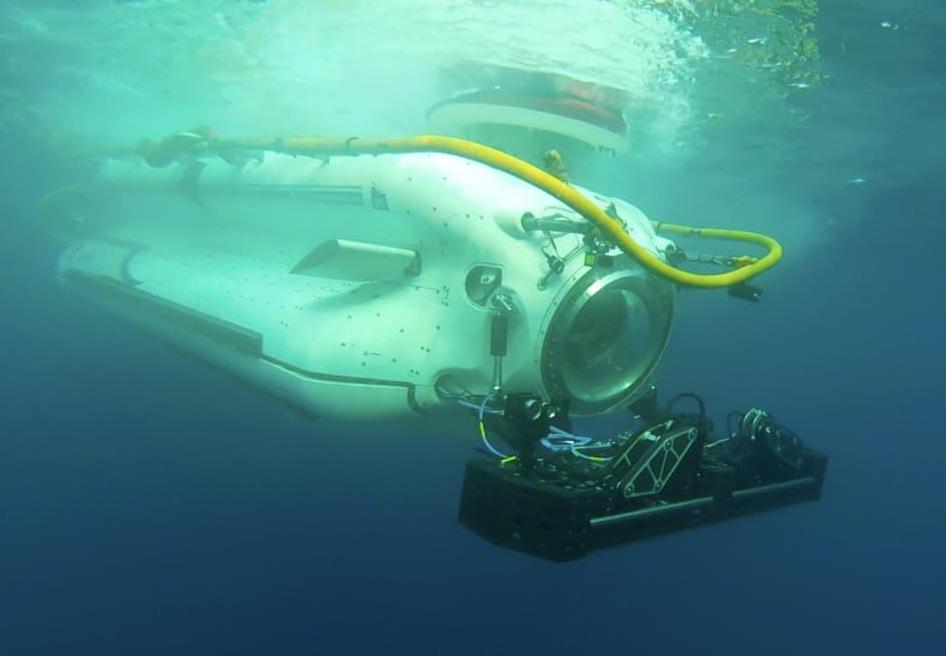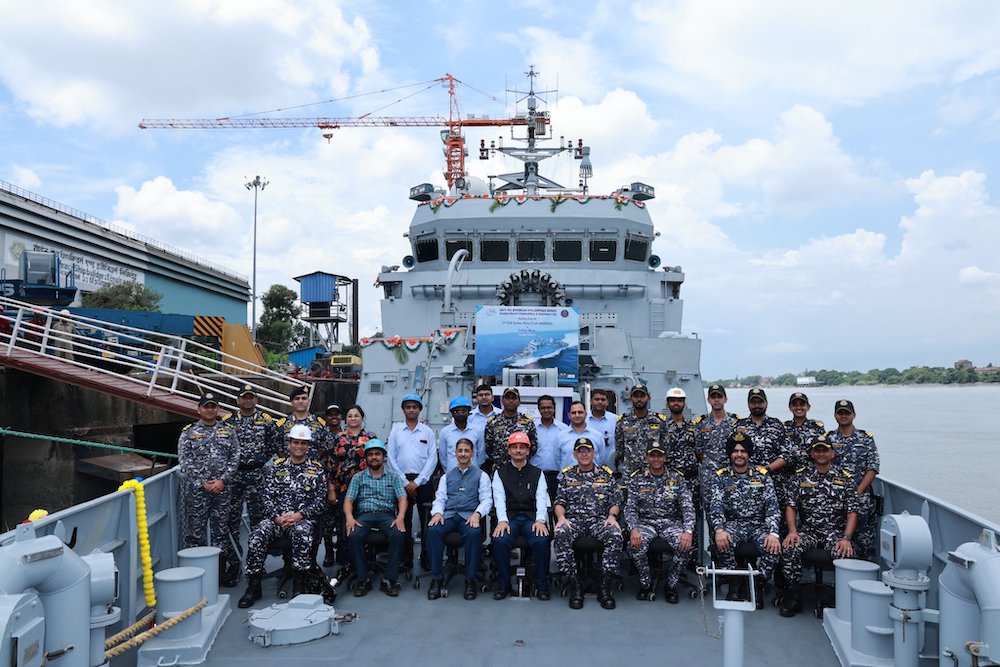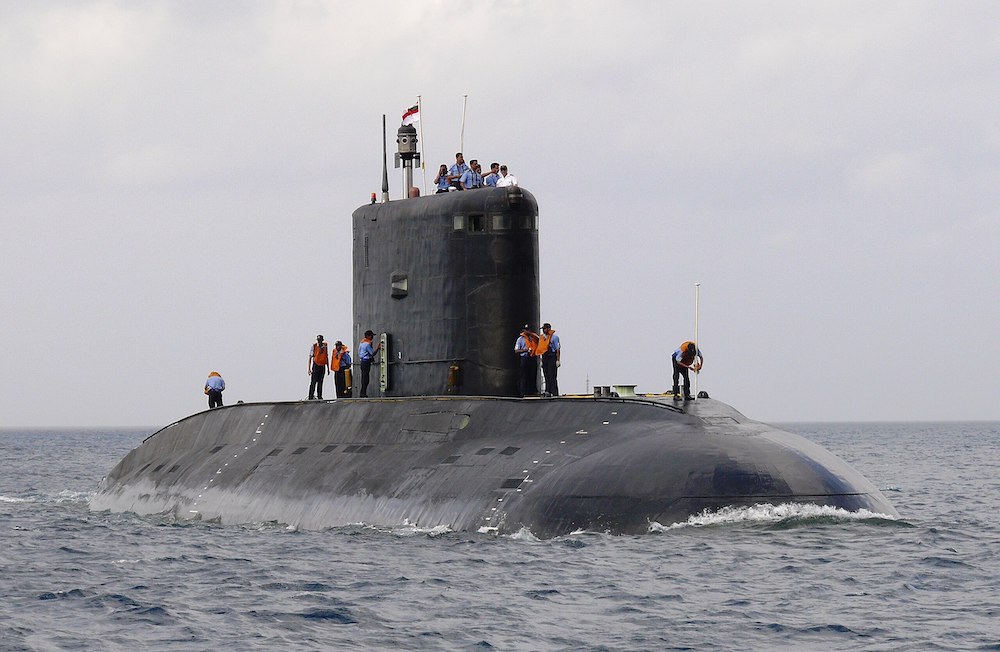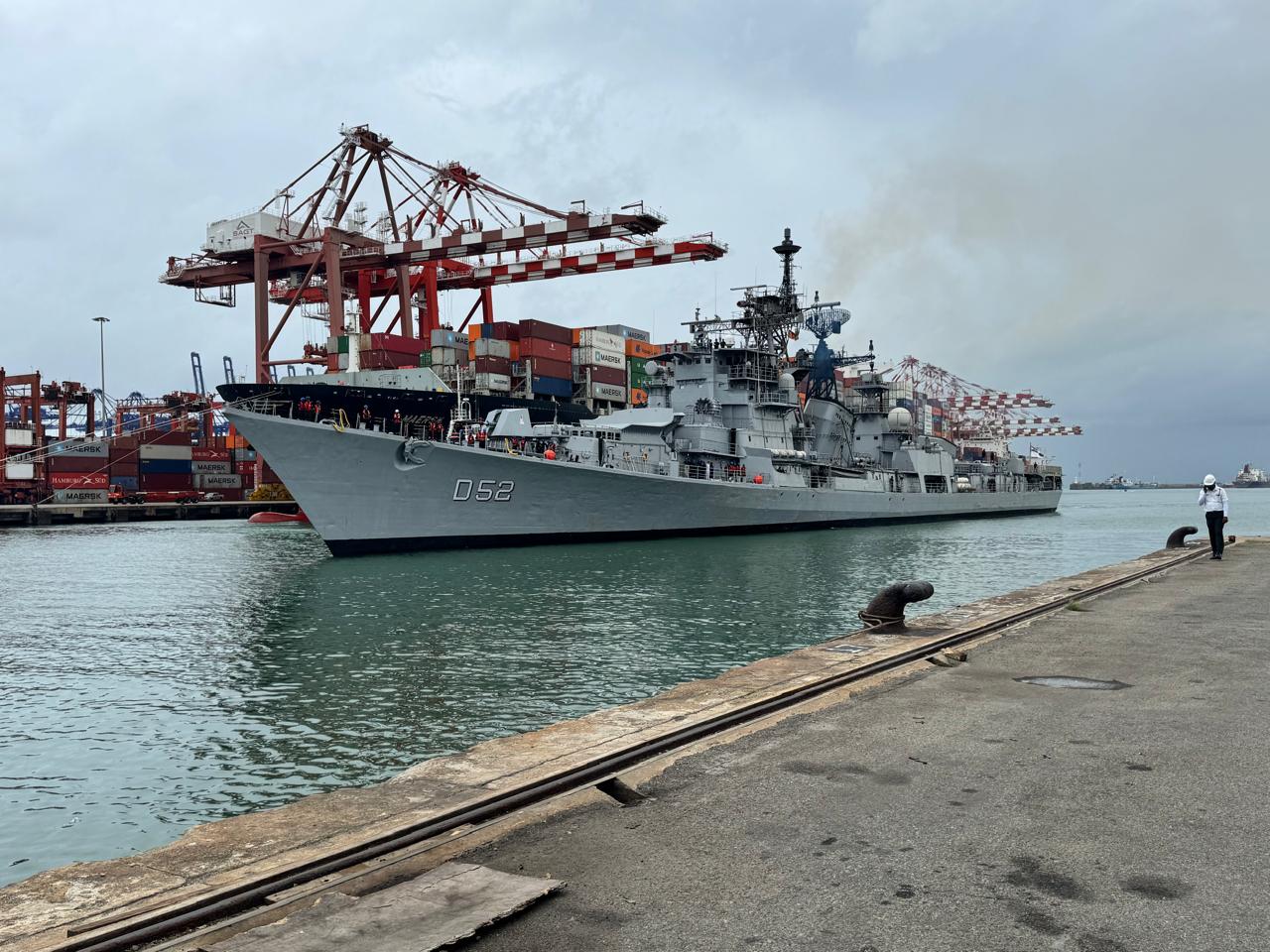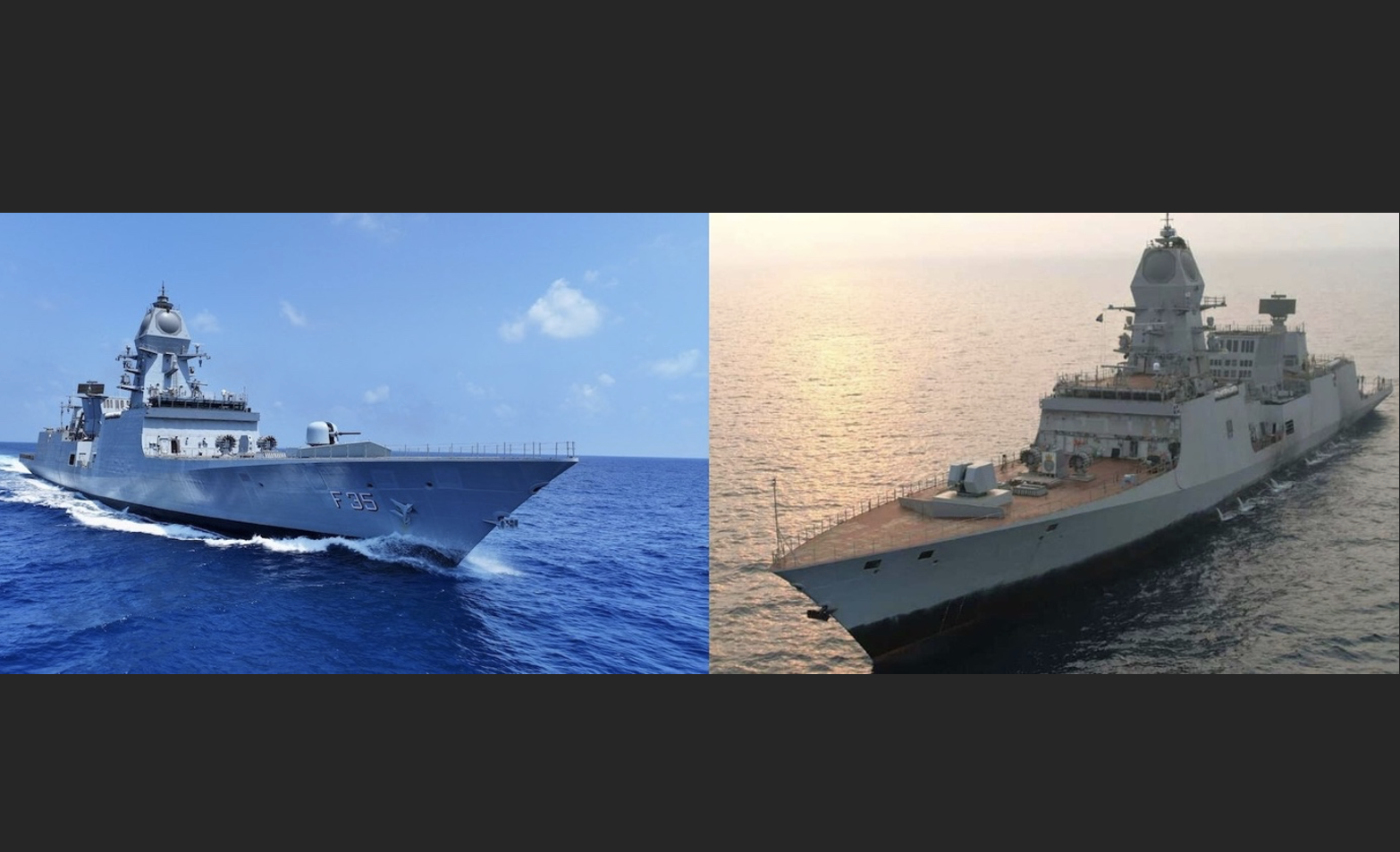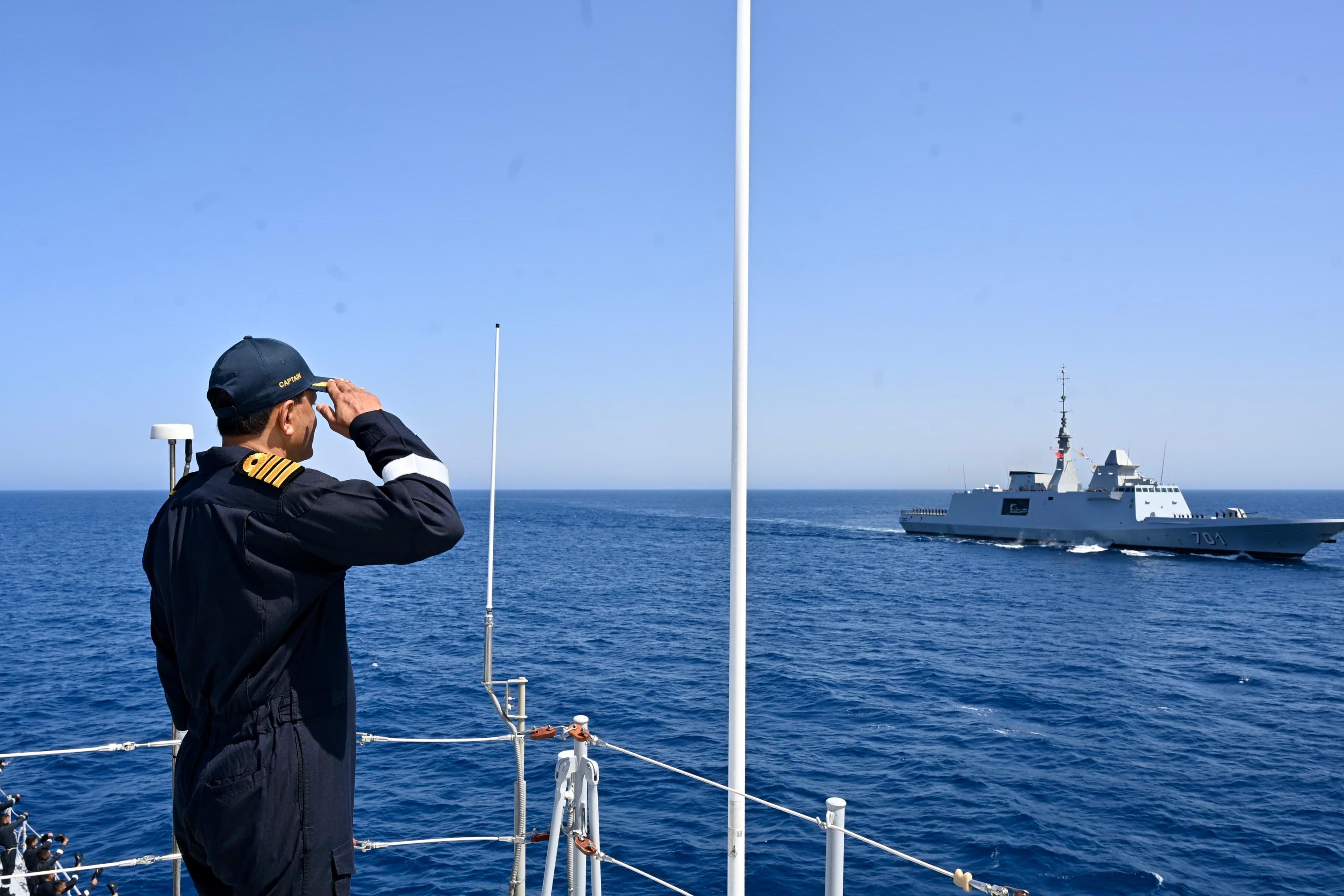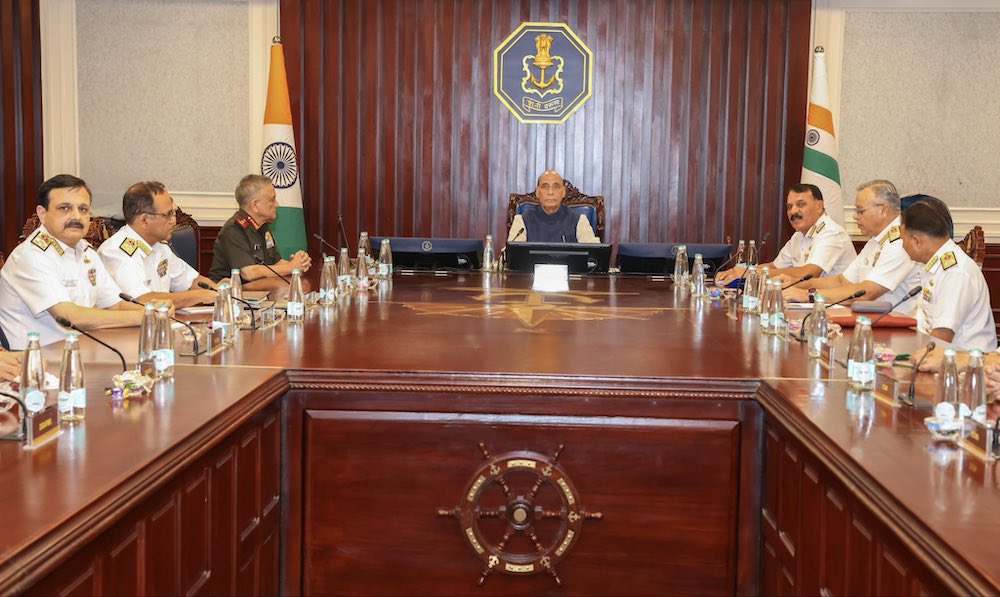 Rajnath Singh (C) with CDS Gen Anil Chauhan (3L) and Navy chief Admiral Dinesh K Tripathi (3R), Navy vice-chief Vice Admiral Sanjay Vatsayan (1L) and the three Indian Navy commanders during the Naval Commanders’ Conference, on October 23, 2025. (Photo: MoD)
Rajnath Singh (C) with CDS Gen Anil Chauhan (3L) and Navy chief Admiral Dinesh K Tripathi (3R), Navy vice-chief Vice Admiral Sanjay Vatsayan (1L) and the three Indian Navy commanders during the Naval Commanders’ Conference, on October 23, 2025. (Photo: MoD)
New Delhi: The defence minister, Rajnath Singh, described Operation Sindoor as a demonstration of India’s readiness to respond to security challenges, stating that the naval deployment created a deterrent posture that confined Pakistani naval assets to harbour or coastal waters. Addressing the Naval Commanders’ Conference here in the national capital on Wednesday, Singh said the operation showcased the Indian Navy’s operational readiness and professional capability to the international community.
He characterized the Navy’s presence in the Indian Ocean region as providing “comfort for friendly nations” while creating “discomfort for those who seek to destabilize the region”.
The defence minister’s remarks come amid heightened maritime activity in the IOR, where competing powers are increasingly projecting naval strength. The IOR has emerged as a critical theatre in contemporary geopolitics, with traditional security concerns intersecting with economic and strategic interests.
Unprecedented deployment scale
Singh revealed that Indian naval surface vessels, submarines, and aircraft have been deployed at unprecedented levels over the past six months. During this period, the Navy provided safe passage to approximately 335 merchant vessels carrying 1.2 million metric tonnes of cargo valued at $5.6 billion, positioning India as what he termed “a trusted and capable partner in the global maritime economy”.
The scale of these operations reflects the Navy’s expanding role in maintaining freedom of navigation and securing sea lanes critical to international trade, particularly in waters where piracy and maritime security threats persist.
Indigenous procurement surge
Emphasising self-reliance in defence manufacturing, Singh noted that nearly 67 per cent of the Navy’s capital acquisition contracts over the past decade have been awarded to Indian industries. The Navy is currently pursuing 194 innovation and indigenisation projects through various government schemes including iDEX, TDF, SPRINT, and Make-in-India initiatives.
The Project 17A frigates, featuring over 75 per cent indigenous content, have generated approximately 127,000 jobs at shipyards, including Mazagon Dock Limited (MDL) and Garden Reach Shipbuilders and Engineers (GRSE), according to Singh. Recent contracts worth approximately ₹315 crore have been awarded to micro, small and medium enterprises and smaller shipyards for yard craft construction.
The Navy’s aviation sector is pursuing several indigenous programmes, including a multi-role maritime reconnaissance aircraft, utility helicopters, twin-engine deck fighters, and naval shipborne unmanned aerial systems. These projects aim to reduce critical capability gaps whilst strengthening domestic defence manufacturing.
Strategic emphasis
The defence minister stressed that modern maritime warfare extends beyond fleet size and hardware acquisition, requiring integration of technology with tactical considerations including geography, deception, timing and human judgement. He emphasized the importance of agility and adaptability in operational planning.
Singh outlined three priority areas for naval development: capability through technology and strength; personnel welfare covering sailors and their families; and partnerships encompassing industry, academia and international cooperation.
The Naval Commanders’ Conference serves as the Navy’s apex forum for operational review and strategic planning. The current session is examining operational preparedness on India’s eastern and western seaboards, while advancing the government’s MAHASAGAR (Mutual and Holistic Advancement for Security Across all Regions) initiative aimed at establishing the Indian Navy as the preferred security partner in the Indian Ocean region and broader Indo-Pacific.
The chief of defence staff, General Anil Chauhan, the chief of naval staff, Admiral Dinesh Kumar Tripathi, and senior defence officials attended the conference.
